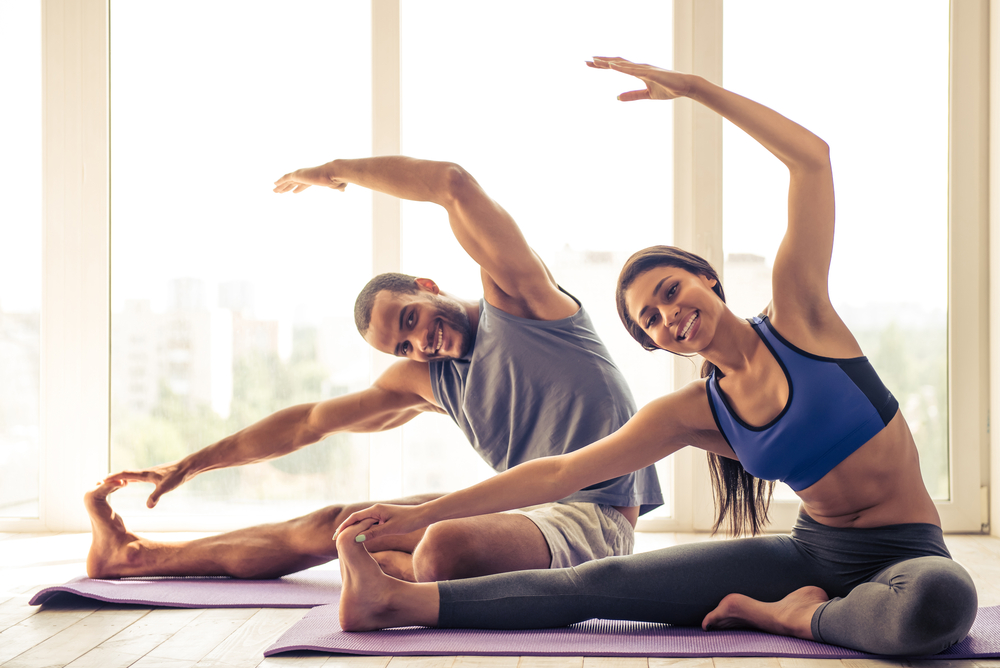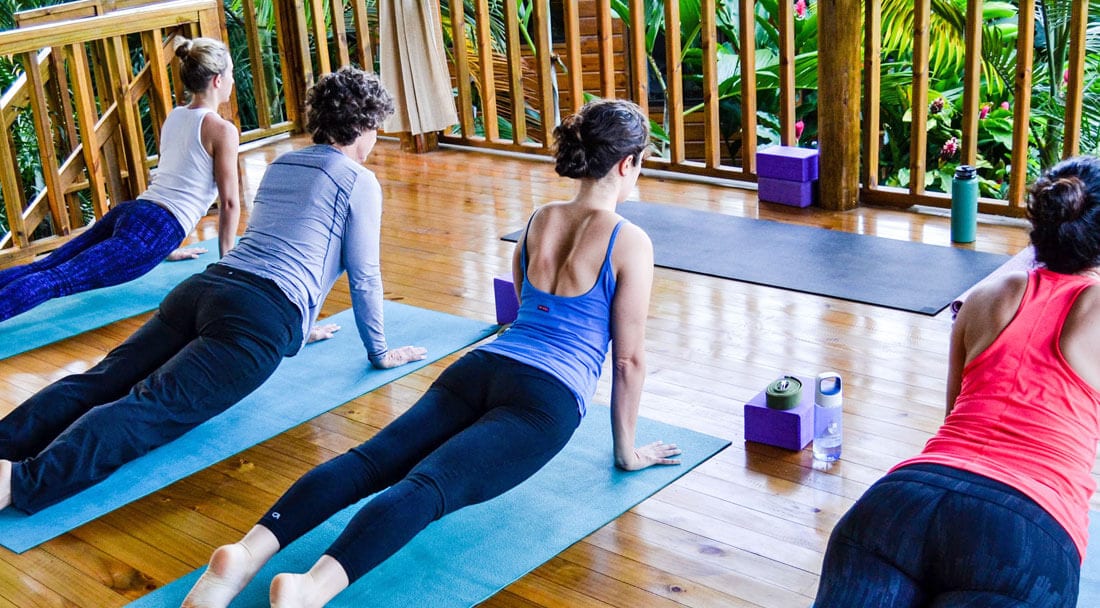
It can be challenging to pick the best yoga pose when you first start a routine. Aim to create a stretch that is both relaxing and strengthening your body. Even though many poses can seem difficult for beginners there are some basic steps that can be done to get the most from your practice. The following are three important poses for beginning yoga. These poses are easy to master and you can then move on to more difficult poses.
Beginners yoga's most valuable aspect is the connection between awareness of your breath and your breath. You can sleep better, feel more present, and reduce stress by getting in touch your breath. This simple guide is sure to make a huge difference in your practice. These are some ways to get started with yoga for beginners. These tips will help you get started. These tips will help you be ready to take a class once you have mastered them.
Beginner yogis will love the shoulder standing exercise. It increases the strength and flexibility in your shoulders, which is a precursor to more challenging poses. It reverses forward-rounded shoulder positions. Start by pressing your hands up, rolling your shoulders back and then extending your back. Keep your balance by looking up and focusing on your feet. Soon you'll be able complete your first few attempts, and increase your strength.

Plank pose is another excellent starting yoga pose. This one is a variation of the plank position. The aim is to keep your elbows under your hips. While it might seem difficult at first this will increase your strength and engage your core muscles. In the next few weeks, you'll be able to master more advanced variations of the same pose. If you're still not sure, book a private session or join a workshop.
There are many options for beginners yoga classes. Several YouTube channels offer these videos. These videos last seven to 40 minutes and offer beginner tips. After you have learned the basics, you can start a 60-minute class with a teacher who knows your limitations. This will ensure that you are doing a good job. The classes are easy to follow and understand.
To begin yoga, beginners should bring a towel and a mat. Although most yoga studios have props available, it is best to search online for the best. You may have injuries or you're not familiar with certain poses, so it's best to consult with a yoga instructor beforehand. Private sessions can be helpful if you aren't comfortable doing so in a group setting.
This type of class is not meant to intimidate beginners. There's no need to be afraid of it. It is easy to do yoga and reap the many benefits. After a few sessions, you will begin to see the changes in your body. Follow your instructor's directions. You will need to do your homework and make sure that you have a suitable mat. This will ensure you are getting the best out of your workouts.

For beginners, it is important to practice as many poses per day as possible. The easiest poses to learn are the ones you already know and can do easily. You'll be surprised at how many yoga positions you can learn. Pay attention to your body and modify your poses as needed. If you have a wrist injury, or you're worried about getting an injury, start slowly and work your way up. These poses will be easy to master once you are comfortable with them.
It doesn't have to be difficult for beginners to do yoga poses. You can experiment with your poses and try out different poses to find which one is the easiest to do. You should start with a few simple and easy-to-follow poses, which are accessible to many different types of people. You can also practice yoga while on a beach or by laying on a beach. In either case, it is best to only do a handful of poses.
FAQ
How to Build Muscles Fast
Fast muscle building is possible by eating healthy foods and regularly lifting weights.
When you're fresh and ready to do something, early morning is the best time for working out.
Exercises such as push-ups and bench presses are good options.
Use different weight training techniques and drink plenty water throughout the day.
Why Metabolic Well-being is the Key to Aging Well
People are living longer lives today than at any point in history. They are also becoming more sick as a result. Despite making great progress in medical science, it is becoming more apparent that our current approach to medicine is not working.
We need to change how we think about health and aging. For healthy aging, it is important to look at metabolic well-being - not just weight reduction but overall wellbeing.
And if you want to live an active life for decades to come, you should ensure that your metabolism stays strong and healthy throughout your entire lifetime.
The good news is that there are many ways to improve your metabolic health. These 7 foods can be incorporated into your diet.
-
Blueberries contain resveratrol, which has been shown to help support cellular longevity. They also contain vitamins C & E, as well as antioxidants.
-
Lentils and pinto beans, which are legumes, provide great fiber and plant-based sources of protein. These nutrients help maintain blood sugar levels so they don’t spike and fall.
-
Broccoli contains sulforaphane, shown in studies to protect cells against DNA damage. It may even be able to slow down cancer progression.
-
Chia seeds are rich in fiber and omega-3 fatty acid. They are rich in protein and antioxidants. All of these nutrients are good for heart health, brain function, gut health, and overall health.
-
Green tea contains catechins, which are polyphenols. Green tea's catechins have been linked with reduced bone fractures as well as cardiovascular disease, cognitive decline, dementia, and increased diabetes risk.
-
Salmonis packed with vitamin D, low in saturatedfat and one of best sources of lean meat.
-
Walnuts are rich in omega-3s as well as antioxidants such alpha lipoic acids (ALA). ALA boosts energy production and reduces inflammation.
What is a good exercise routine?
Regular exercise is key to staying healthy. No matter what kind of exercise you do, as long you do it consistently. The most important thing is consistency. To achieve success, you need to persevere for a long time.
Begin by starting to do a little bit of physical activity each day (like walking). Increase the time you spend exercising each day until you can do 30 minutes. You can do this running, swimming weight training, yoga or aerobics classes.
You should try to ensure that you exercise most days of the week. If you have a valid reason to skip a session, it is best not to.
When exercising outside, make sure you have the right clothing and shoes. Also, consider weather conditions and how they might affect your ability or safety while exercising.
While exercising, make sure to drink plenty water. Avoid alcohol consumption during this time as it can lead to dehydration. Avoid caffeinated drinks, such as coffee, tea and cola. They will not only give you more energy but also dehydrate you.
When you first start exercising, you might feel tired after completing your workouts. You'll feel more energetic and refreshed if you keep going with your exercise program.
Statistics
- According to the American Heart Association, blood pressure should be checked at least once every two years, beginning at age 20. (my.clevelandclinic.org)
- 10 pounds in a month is likely during a lean bulking phase, especially for beginners. (muscleandstrength.com)
- Get free shipping and 25% off today. (healthline.com)
- By John Thompson Take a whopping 38% off a set of PowerBlock Pros. (menshealth.com)
- Are You One of the 20% of Guys (mh.co.za)
External Links
How To
What nutrients does a person need every day?
Men need healthy growth and development. Vitamins, minerals, vitamins, nutrients, carbohydrates, fats and fiber are all essential for the body.
Also, the male body requires certain nutrients at specific times during the day. You can see that your body uses energy to make hormones. When you get up, protein is used to repair and build muscle.
Your body uses the night to break down fat and store extra energy as glucose. During this time, your body needs fewer calories but still needs sufficient nutrients. You might have an occasional snack during the night if your stomach is feeling hungry.
For your body to function properly, it needs adequate amounts of protein and carbs. If you train hard, you may experience muscle soreness after exercising.
To avoid this, you need to eat carbs and proteins within two hours of training. To provide energy, your body will begin to break down stored glycogen.
Also, protein must be consumed immediately after your workouts. This prevents muscle tissue being destroyed while you're sleeping.
During periods of intense physical activity, your body produces lactic acid. It builds up in your bloodstream, which can lead to fatigue. You can avoid this by eating carbohydrates-rich foods like fruits and veggies.
Carbohydrates are a good source of energy to help you recover from hard exercise.
Your diet may include lean meats like fish, eggs, milk cheese, yogurt or beans as well as lean proteins such as fish, eggs, egg yolks, cheese, yogurt, bean, peanuts and seeds.
These foods all contain high-quality proteins. Protein aids in muscle growth and repair of damaged tissues. It also provides the amino acids your body needs to produce sex hormones and testosterone.
Good skin, hair, and joint health requires adequate dietary fats. Healthy men need between 20% and 35% of their total caloric intake from fat.
Fat can help keep your heart healthy and protect you from cancer. Your brain also functions properly thanks to fat.
Most of the fat you need can be obtained from vegetable oils, including sunflower oil (or soybean oil), peanut oil, peanut oil, soybean oil, and peanut oil.
These oils are high in monounsaturated fatty acids (MUFAs). MUFAs help lower cholesterol and reduce inflammation. They protect your cells from damage by free radicals.
Saturated Fats (SFAs), which are mostly found in animal products like meat, butter, and dairy products, include LDL ("bad") cholesterol. SFAs increase LDL ("bad") cholesterol, and increase triglycerides. They are also good for weight loss and belly fat.
Polyunsaturated oil (PUFAs), which are plant-based, can be found in vegetable oils, nuts seeds, grains, and other plant-based products. PUFAs help improve cardiovascular function, and lower inflammation. They also reduce blood sugar, cholesterol, and other inflammatory factors.
Low HDL ("good") cholesterol is a common cause of erectile dysfunction in men. The consumption of saturated fats raises bad cholesterol which in turn lowers good cholesterol.
Men who eat lots of red meat or pork can develop prostate problems. This is because these foods contain high amounts of nitrates. When cooked at high temperatures, nitrates can be converted to nitrosamines. These compounds can cause cancer.
Nitrites and other harmful chemicals are common in processed meats. You should avoid them.
According to the American Heart Association, you should limit your consumption of red meat to no more that 2 meals per week. Instead, choose poultry, fish, legumes, tofu, whole grain bread, and cereals.